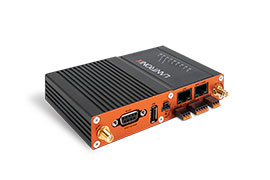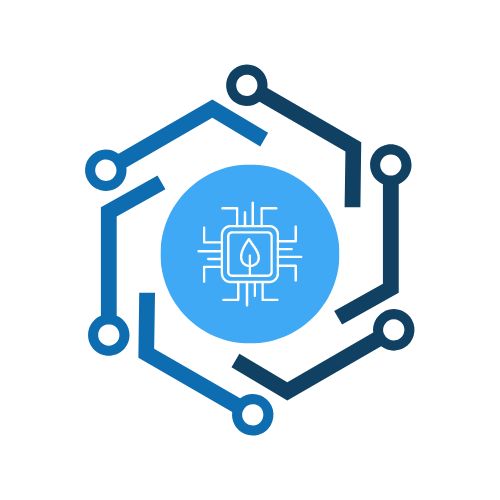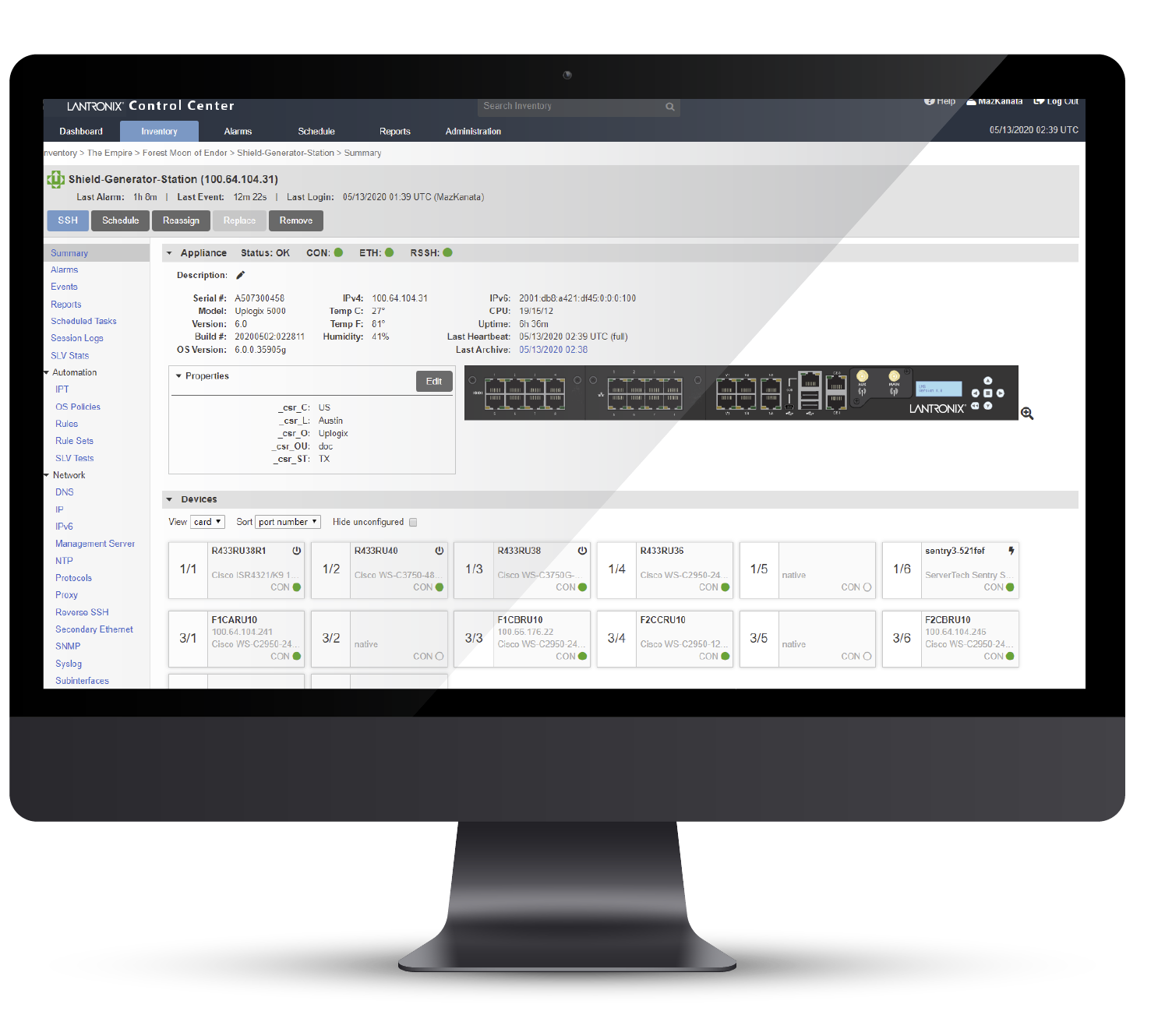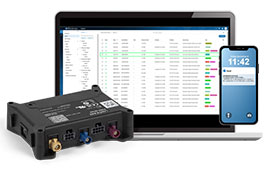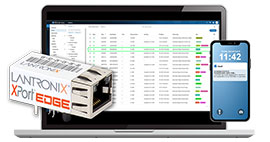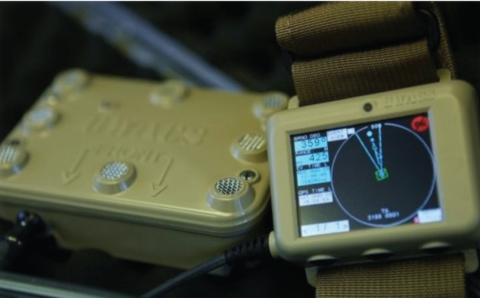Ethernet Tutorial – Part III: Sharing Devices
A Look at Device Server Technology
Device networking starts with a device server, which allows almost any device with serial connectivity to connect to Ethernet networks quickly and cost-effectively. These products include all of the elements needed for device networking and because of their scalability; they do not require a server or gateway.
This tutorial provides an introduction to the functionality of a variety of device servers. It will cover print servers, terminal servers and console servers, as well as embedded and external device servers. For each of these categories, there will also be a review of specific Lantronix offerings.
An Introduction to Device Servers
A device server is characterized by a minimal operating architecture that requires no per seat network operating system license, and client access that is independent of any operating system or proprietary protocol. In addition the device server is a “closed box,” delivering extreme ease of installation, minimal maintenance, and can be managed by the client remotely via a web browser.
By virtue of its independent operating system, protocol independence, small size and flexibility, device servers are able to meet the demands of virtually any network-enabling application. The demand for device servers is rapidly increasing because organizations need to leverage their networking infrastructure investment across all of their resources. Many currently installed devices lack network ports or require dedicated serial connections for management — device servers allow those devices to become connected to the network.
Device servers are currently used in a wide variety of environments in which machinery, instruments, sensors and other discrete devices generate data that was previously inaccessible through enterprise networks. They are also used for security systems, point-of-sale applications, network management and many other applications where network access to a device is required.
As device servers become more widely adopted and implemented into specialized applications, we can expect to see variations in size, mounting capabilities and enclosures. Device servers are also available as embedded devices, capable of providing instant networking support for developers of future products where connectivity will be required.
Print servers, terminal servers, remote access servers and network time servers are examples of device servers which are specialized for particular functions. Each of these types of servers has unique configuration attributes in hardware or software that help them to perform best in their particular arena.
External Device Servers
External device servers are stand-alone serial-to-wireless (802.11b) or serial-to-Ethernet device servers that can put just about any device with serial connectivity on the network in a matter of minutes so it can be managed remotely.
External Device Servers from Lantronix
Lantronix external device servers provide the ability to remotely control, monitor, diagnose and troubleshoot equipment over a network or the Internet. By opting for a powerful external device with full network and web capabilities, companies are able to preserve their present equipment investments.
Lantronix offers a full line of external device servers: Ethernet or wireless, advanced encryption for maximum security, and device servers designed for commercial or heavy-duty industrial applications.
Wireless:
Providing a whole new level of flexibility and mobility, these devices allow users to connect devices that are inaccessible via cabling. Users can also add intelligence to their businesses by putting mobile devices, such as medical instruments or warehouse equipment, on networks.
Security:
Ideal for protecting data such as business transactions, customer information, financial records, etc., these devices provide enhanced security for networked devices.
Commercial:
These devices enable users to network-enable their existing equipment (such as POS devices, AV equipment, medical instruments, etc.) simply and cost-effectively, without the need for special software.
Industrial:
For heavy-duty factory applications, Lantronix offers a full complement of industrial-strength external device servers designed for use with manufacturing, assembly and factory automation equipment. All models support Modbus industrial protocols.
Embedded Device Servers
Embedded device servers integrate all the required hardware and software into a single embedded device. They use a device’s serial port to web-enable or network-enable products quickly and easily without the complexities of extensive hardware and software integration. Embedded device servers are typically plug-and-play solutions that operate independently of a PC and usually include a wireless or Ethernet connection, operating system, an embedded web server, a full TCP/IP protocol stack, and some sort of encryption for secure communications.
Embedded Device Servers from Lantronix
Lantronix recognizes that design engineers are looking for a simple, cost-effective and reliable way to seamlessly embed network connectivity into their products. In a fraction of the time it would take to develop a custom solution, Lantronix embedded device servers provide a variety of proven, fully integrated products. OEMs can add full Ethernet and/or wireless connectivity to their products so they can be managed over a network or the Internet.
- Module:
-
These devices allow users tonetwork-enable just about any electronic device with Ethernet and/or wireless connectivity.
- Board-Level:
-
Users can integrate networking capabilities onto the circuit boards of equipment like factory machinery, security systems and medical devices.
- Single-Chip Solutions:
-
These powerful, system-on-chip solutions help users address networking issues early in the design cycle to support the most popular embedded networking technologies.
Terminal Servers
Terminal servers are used to enable terminals to transmit data to and from host computers across LANs, without requiring each terminal to have its own direct connection. And while the terminal server’s existence is still justified by convenience and cost considerations, its inherent intelligence provides many more advantages. Among these is enhanced remote monitoring and control. Terminal servers that support protocols like SNMP make networks easier to manage.
Devices that are attached to a network through a server can be shared between terminals and hosts at both the local site and throughout the network. A single terminal may be connected to several hosts at the same time (in multiple concurrent sessions), and can switch between them. Terminal servers are also used to network devices that have only serial outputs. A connection between serial ports on different servers is opened, allowing data to move between the two devices.Given its natural translation ability, a multi-protocol server can perform conversions between the protocols it knows such as LAT and TCP/IP. While server bandwidth is not adequate for large file transfers, it can easily handle host-to-host inquiry/response applications, electronic mailbox checking, etc. In addition, it is far more economical than the alternatives — acquiring expensive host software and special-purpose converters. Multiport device and print servers give users greater flexibility in configuring and managing their networks.
Whether it is moving printers and other peripherals from one network to another, expanding the dimensions of interoperability or preparing for growth, terminal servers can fulfill these requirements without major rewiring. Today, terminal servers offer a full range of functionality, ranging from 8 to 32 ports, giving users the power to connect terminals, modems, servers and virtually any serial device for remote access over IP networks.
Print Servers
Print servers enable printers to be shared by other users on the network. Supporting either parallel and/or serial interfaces, a print server accepts print jobs from any person on the network using supported protocols and manages those jobs on each appropriate printer.
The earliest print servers were external devices, which supported printing via parallel or serial ports on the device. Typically, only one or two protocols were supported. The latest generations of print servers support multiple protocols, have multiple parallel and serial connection options and, in some cases, are small enough to fit directly on the parallel port of the printer itself. Some printers have embedded or internal print servers. This design has an integral communication benefit between printer and print server, but lacks flexibility if the printer has physical problems.
Print servers generally do not contain a large amount of memory; printers simply store information in a queue. When the desired printer becomes available, they allow the host to transmit the data to the appropriate printer port on the server. The print server can then simply queue and print each job in the order in which print requests are received, regardless of protocol used or the size of the job.
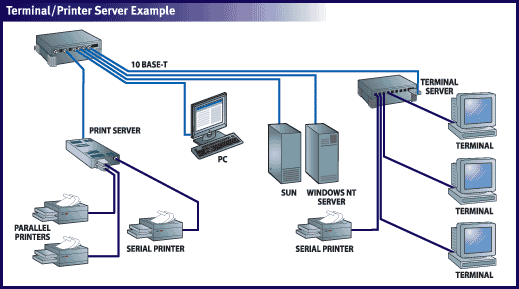
Device Server Technology in the Data Center
The IT/data center is considered the pulse of any modern business. Remote management enables users to monitor and manage global networks, systems and IT equipment from anywhere and at any time. Device servers play a major role in allowing for the remote capabilities and flexibility required for businesses to maximize personnel resources and technology ROI.
Console Servers
Console servers provide the flexibility of both standard and emergency remote access via attachment to the network or to a modem. Remote console management serves as a valuable tool to help maximize system uptime and system operating costs.
Secure console servers provide familiar tools to leverage the console or emergency management port built into most serial devices, including servers, switches, routers, telecom equipment – anything in a rack – even if the network is down. They also supply complete in-band and out-of-band local and remote management for the data center with tools such as telnet and SSH that help manage the performance and availability of critical business information systems.
Console Management Solutions from Lantronix
Lantronix provides complete in-band and out-of-band local and remote management solutions for the data center. Lantronix secure console management products give IT managers unsurpassed ability to securely and remotely manage serial devices, including servers, switches, routers, telecom equipment – anything in a rack – even if the network is down.
Conclusion
The ability to manage virtually any electronic device over a network or the Internet is changing the way the world works and does business. With the ability to remotely manage, monitor, diagnose and control equipment, a new level of functionality is added to networking — providing business with increased intelligence and efficiency. Lantronix leads the way in developing new network intelligence and has been a tireless pioneer in machine-to-machine (M2M) communication technology.
We hope this introduction to networking has been helpful and informative. This tutorial was meant to be an overview and not a comprehensive guide that explains everything there is to know about planning, installing, administering and troubleshooting a network. There are many Internet websites, books and magazines available that explain all aspects of computer networks, from LANs to WANs, network hardware to running cable. To learn about these subjects in greater detail, check your local bookstore, software retailer or newsstand for more information.
